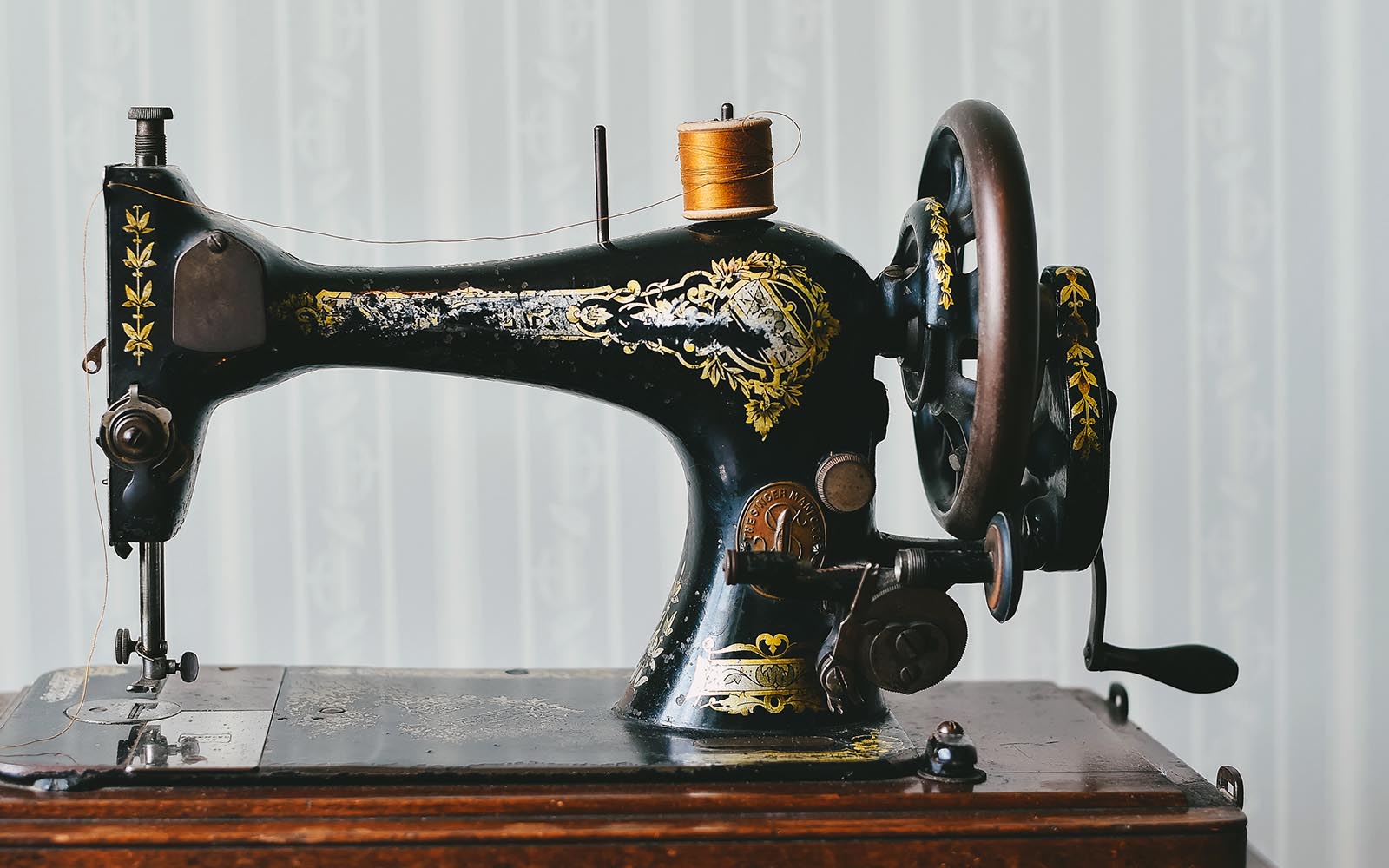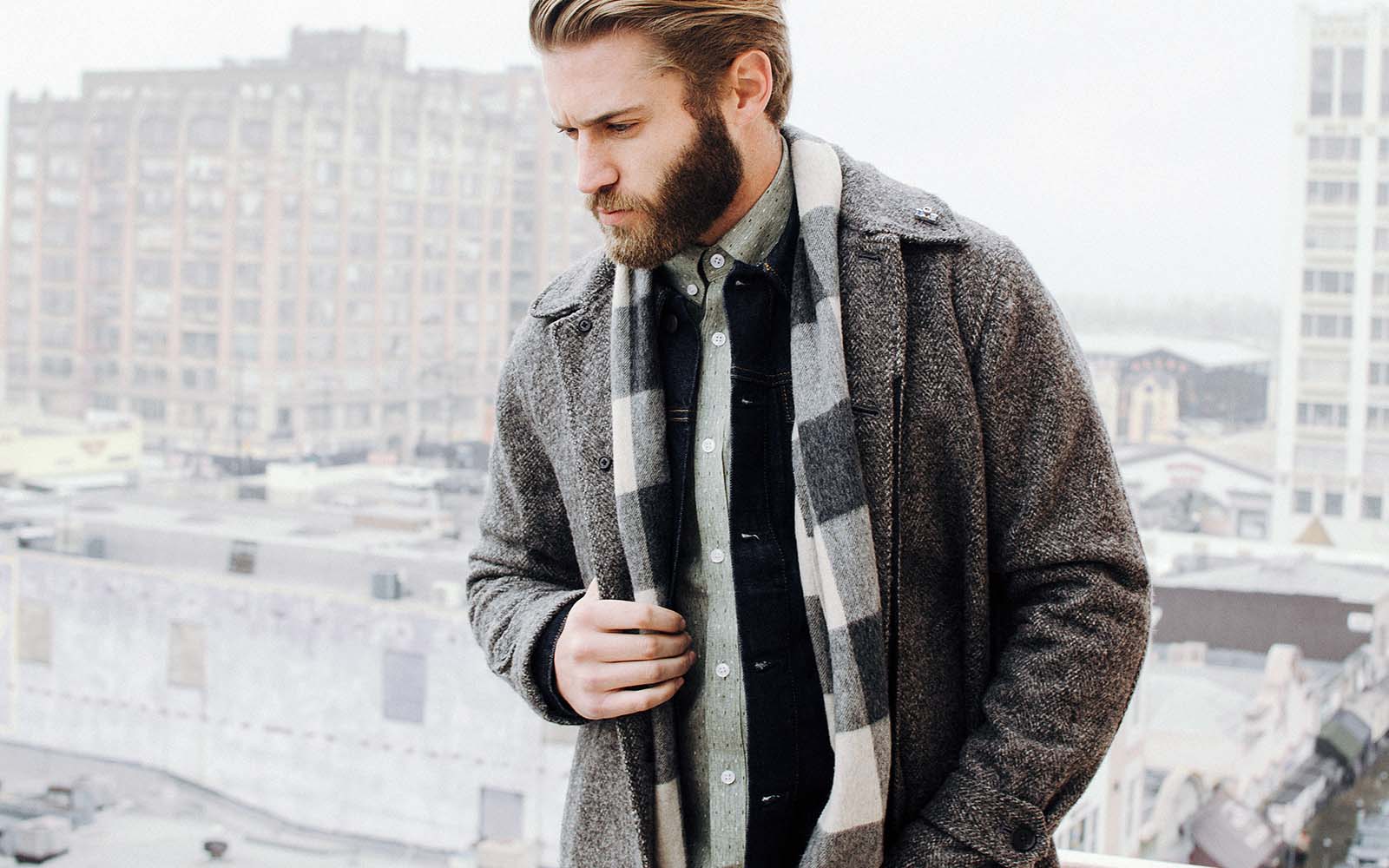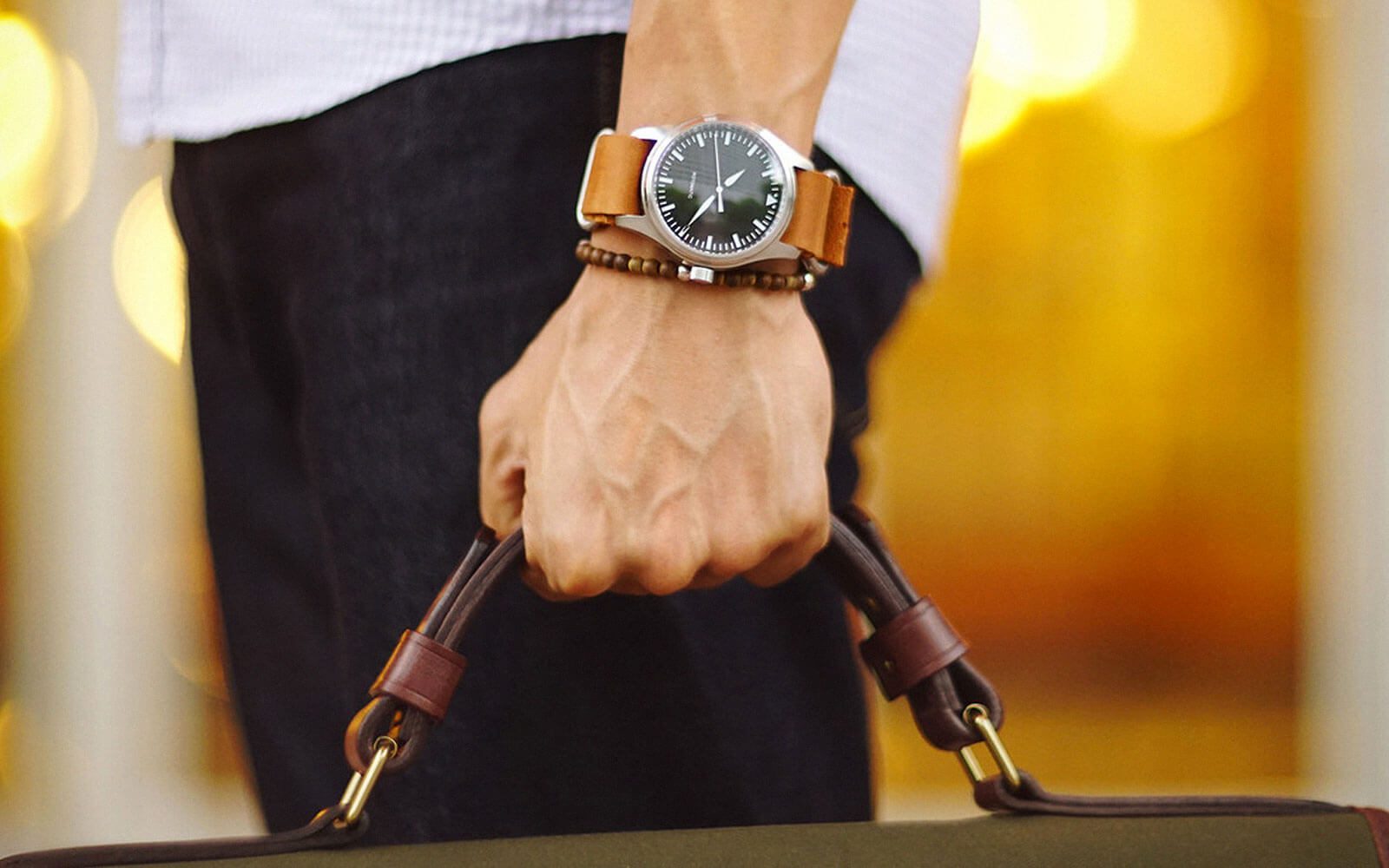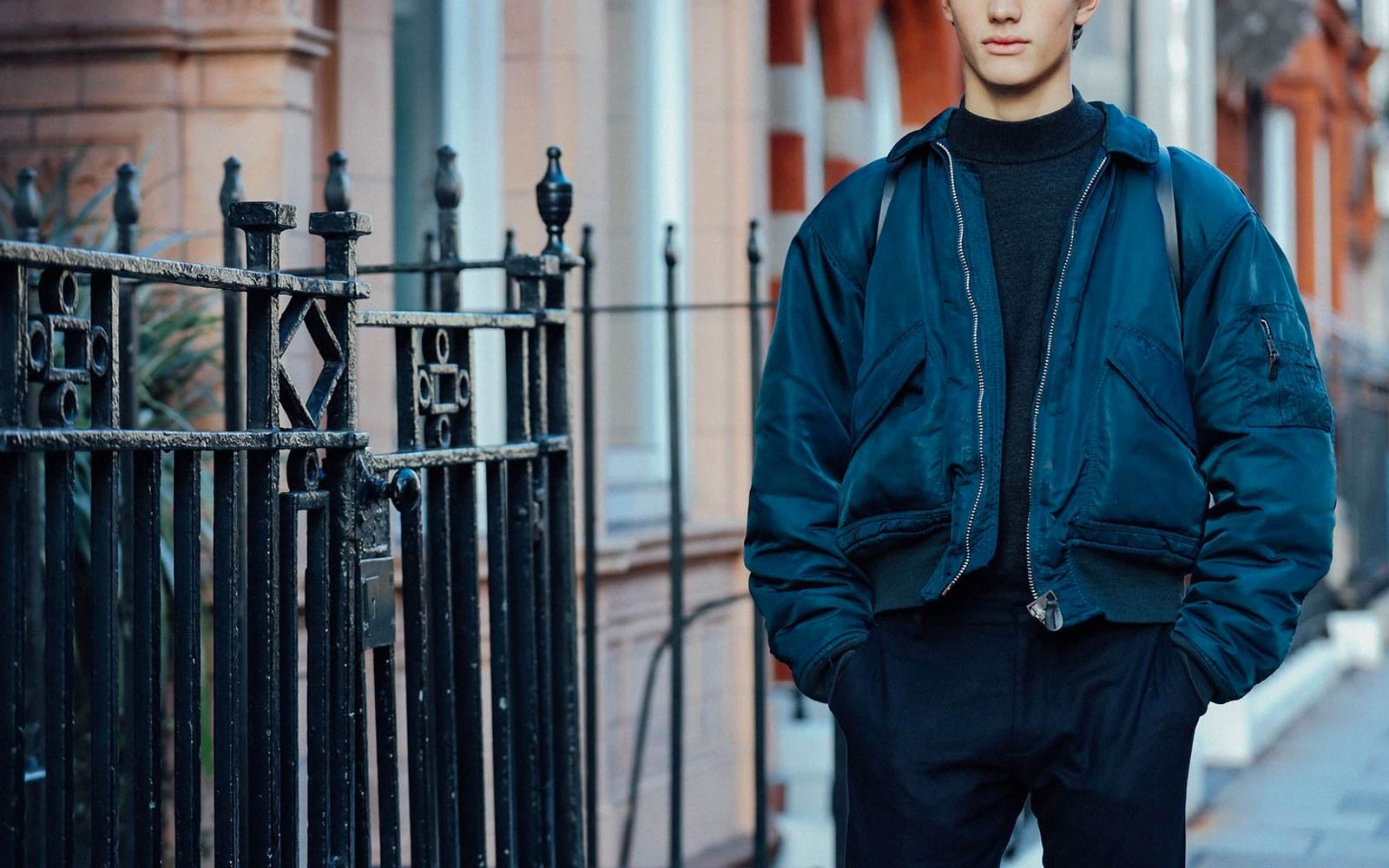[Feature image by Annie Spratt]
Fashion goes through its own course of Darwinism. Certain items are fit to survive and evolve, while others go extinct. It’s fun to look back at what failed to make the cut, and why.
Table of Contents
A look at men’s fashion history: 6 accessories that are now extinct
The Ascot Tie – Undead but Not Alive
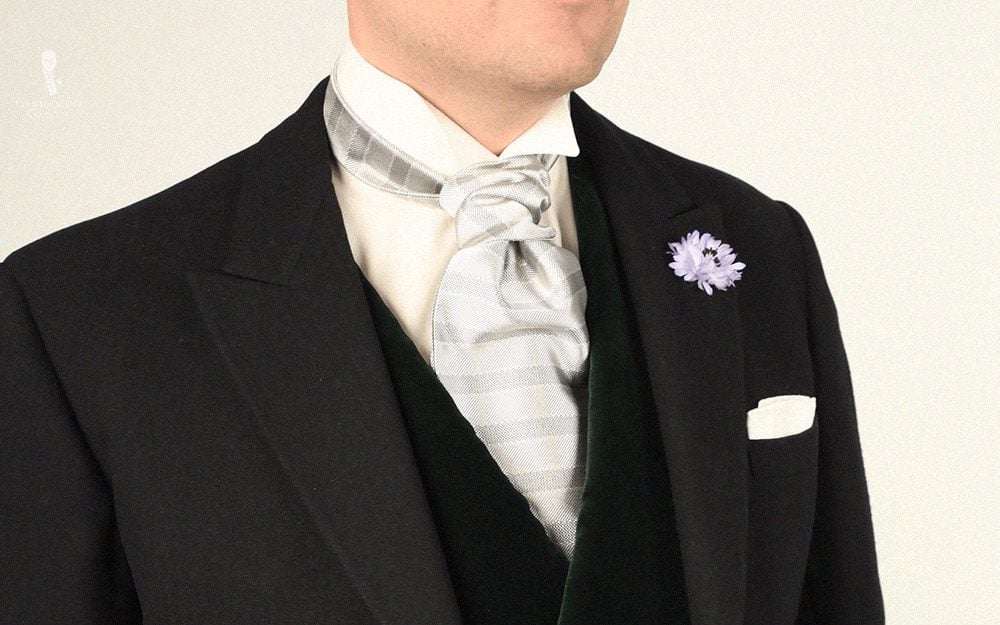

Set sail in style with our Small Anchors Skinny Tie. Featuring a pattern of white anchors atop a olive background, this nautical tie is the perfect addition to any vacation-ready ensemble.

Our Blue Denim Flower Lapel Pin will get everybody talking. With its unique choice of fabric and its classic flower shape, you are bound to stand out.
What it is: A neckband with wide pointed wings. The best way we can describe an ascot tie that it’s a cross between a tie, a scarf, and a handkerchief. A formal ascot has a lining, similar to a tie. It is tied with a four-in-hand knot and worn with a pin around a stiff collared shirt.
A casual ascot is unlined. It is loosely looped and tucked into an open shirt collar.

Where it’s worn: Traditional ascots are worn exclusively at formal events, such as daytime weddings. They are considered a component of morning dress, which is a British custom of dress for festive functions like summer weddings, horse races, and sometimes civic lunches. A casual ascot is worn to elevate an informal outfit, and it can be worn on an everyday basis.
Why it went out of style: The ascot never fully went out of style, but it is rarely worn. It’s about as common as top hats, which we’ll get to later. The accessory is a little affectatious–though formal, it’s ornate and not business-appropriate. Today, you’re far more likely to see a wide tie, or even a skinny tie, worn even at formal daytime functions like the Royal Ascot race. Likewise, the casual ascot is difficult to pull off. If you do venture into wearing it, we suggest a low knot, so that it barely peeks from under an open collar.
The Codpiece – Awkward Flex

What it is: A covering or pouch that attaches to the crotch of a man’s pants. It often accentuates the genital area. The codpiece originated in the 14th century, when all men wore tights that had a gap at the crotch. Codpieces started as a triangular fabric attached to shield the genitals. As time went on, they became structured and padded to emphasize the genitals. Codpieces reached their peak of size and decoration in the 1540s before going out of style by the 1590s.
Where it’s worn: Traditionally, the codpiece was worn as part of underwear with any medieval outfit. Then metal codpieces became popular as a form of armor for knights in the 1500s. Today, unless you’re in a heavy metal band or some sort of niche underground art ring, you probably won’t be caught dead wearing a codpiece.
Why it went out of style: Codpieces became a joke by the 1600s, so much so that Renaissance humorists would make fun of them. They’re the equivalent to a “weird flex” x 1000. The closest modern equivalent to a codpiece would be a protective cup for male athletes–functional, yes; fashion? no, no, no.
The Monocle – See From the Peanut Gallery

What it is: A single eyeglass that corrects or enhances the vision of one eye. It’s generally attached to the clothing with a string or wire, and it is held in place with the wearer’s facial muscles. Monocles helped wearers read small text and engravings.
Where it’s worn: Monocles were worn by upper-class men in morning dress. In the 1890s, the stereotypical capitalist or businessman would wear a monocle with a top hat. You see this caricatured in the Monopoly Man today, or Mr. Peanut, the Planter’s mascot.
Why it went out of style: Advancements in optometry made monocles obsolete. Eye doctors developed more effective lenses that could be tailored to each eye with different prescriptions. People would much rather wear glasses and contact lenses today than monocles.
The Walking Stick – Before There Was “BDE”


What it is: A stick, often made of chestnut, ebony, beechwood, or ivory, that has a decorative handle. Canes were used by wealthy men and women in the 1600-1800s as a symbol of status. Walking sticks signified order and influence, and they were often adorned with gems. Additionally, some canes were hollow and used to store personal belongings.
Where it’s worn: Well-to-do men had different sticks for every occasion–morning, evening, and more. Though canes had originated as tools for self-defense, or as walking aids, they became purely ornamental in fashion by the 1600s. Men accessorized with canes alongside many other items on this list of antiquated frills.
Why it went out of style: By the late 19th century, mass production and globalization allowed for cheaper, widely available canes. As a result, everyone now owned a walking stick, albeit a less intricate one. Canes became a pointless adornment, and they were no longer a status symbol. Eventually, only those who needed physical walking aids would use canes.
The Pocket Watch – Less Replaceable than the iPhone


The case and chain are made of alloy, the quartz pocket watch is well crafted; Moreover, it looks fashionable and unique.
What it is: A watch on a chain that’s meant to be carried in a pocket. The chain typically attaches to a waistcoat, lapel, or belt loop in order to prevent the watch from dropping. These portable spring clocks were the first timepieces that people could own individually.
Where it’s worn: Jackets and vests had special pockets to accommodate these personal timepieces. Pocket watches were once regarded as status symbols and family heirlooms. They were made of precious metals and sometimes encrusted with jewels. In the 1930s and ’40s, many men wore pocket watches with zoot suits to showcase their indulgence and wealth.
Why it went out of style: Wristwatches became far more popular than pocket watches during WWII, when individuals needed quick access to time. People eventually opted for the practicality of wrist watches over decorative timepieces. And today, most people wear either smart watches or just use their phones to tell time.
The Top Hat – Silly Human, Top Hats are for Rabbits


These Hats are a Great Accessory for any Adult Costume. Use for Halloween, Holiday Parties or any Costume Bashes.
What it is: A tall, stiff hat with a flat crown and a broad brim. Top hats most likely evolved from the Puritan sugarloaf hat. They are made of stiff wool felt and sometimes silk.
Where it’s worn: Silk or beaver fur top hats were a standard for formal morning dress, but the typical felt top hat, known as a “chimney pot hat” or a “stovepipe hat,” was worn by men of all classes in the 1800s. Policemen and postmen wore non-fur felt hats as part of their uniforms, to give them a more authoritative presentation.
Why it went out of style: The stiff top hats, which became commonplace, were gradually replaced by softer hats due to cost and convenience. By the end of the Second World War, top hats only made an appearance at formal or political functions, such as presidential inaugurations. And when the 1960s came, not even presidents would wear the hat at their inaugural addresses. Today, those attending events that require formal morning dress may still wear top hats. That, and steampunk enthusiasts, or musicians à la Panic! at the Disco.
Read next: 100 Plus Years of Men’s Fashion
- Who Is She? 18 Gritty and Heroic Women that Every Man Should Know Consider a role model who's also female - February 15, 2022
- Which Sunglasses Style Should You Rock This Season? Take the quiz so you can be the hottest guy there, no shade - April 5, 2019
- Why You Need to Wear a Linen Suit Impeccably suave without sweating your apples off - March 29, 2019

